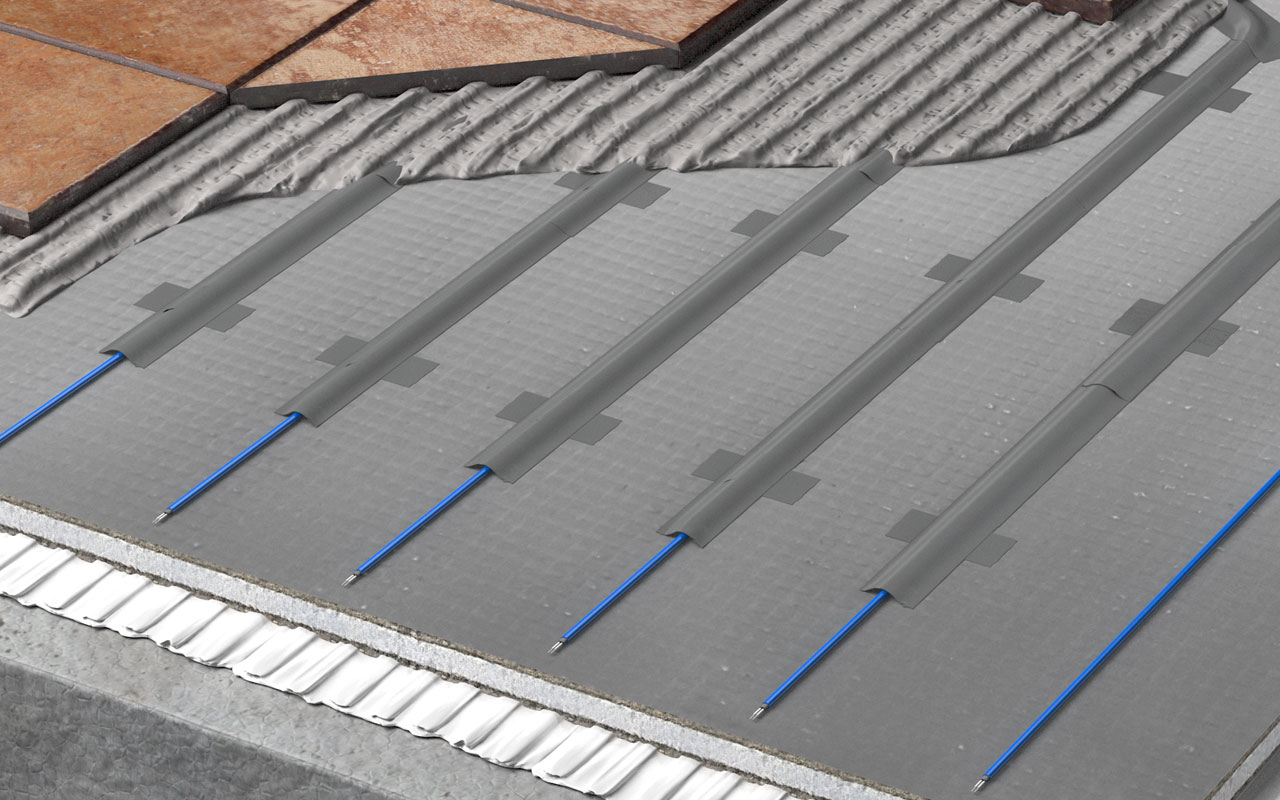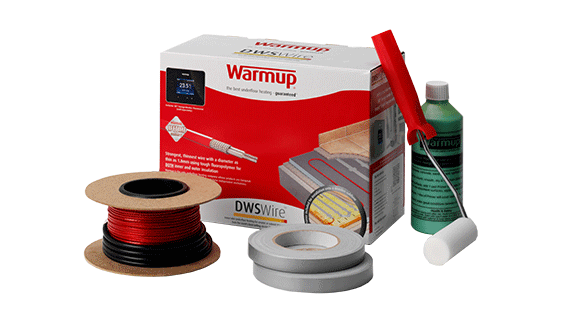Loose Wire System
The Loose Wire System is designed for installation in small and irregular shaped areas under ceramic and stone floor finishes. Ideal for bathrooms.
Application
Directly under ceramic tile or stone floors
Small and irregular shaped areas
Renovation
The heating cable is the thinnest on the market, only 1.8mm. The small cross-section of the heating element allows it to be installed without the need for a layer of a self-levelling screed.
Floor levels will not be raised. This means no extra costs or time for the system to dry. It is suitable for all applications, providing primary or secondary heating in all rooms.
The system is designed for installation under ceramic or natural stone tiled flooring.
Key Benefits
Ideal in small and irregular rooms
Ideal for spaces with many fixtures or corners (such as bathrooms).
Different wattage densities
The heating cable can be laid at different spacings to give different wattage output, depending on the insulation levels of the building and the client requirements.
Quick installation
One connection lead for fewer installation steps.
Guarantee & Warranty

SafetyNet Installation Guarantee
If you accidentally damage the heating system during installation, return it to Warmup and we will replace it with another system of the same make and model free of charge.

Lifetime Warranty
This product comes with a Lifetime Warranty. We are completely confident in the standard of our products.
| Operating voltage | 220-230V AC, 50Hz |
| Cable thickness | 1.8mm |
| Inner/Outer Insulation | Advanced fluoropolymer |
| Average Output rating | 150 W/m² |
| Cold tail length | 3m |
| Certificates | |
| Model | Cable length (m) | Wattage (W) | Amperage (A) | Resistance (Ω) |
| DWS300 | 22 | 300 | 1,3 | 176 |
| DWS400 | 32 | 400 | 1,7 | 128 |
| DWS600 | 44 | 600 | 2,6 | 88 |
| DWS800 | 64 | 800 | 3,6 | 64 |
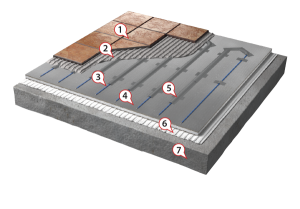
- Final floor
- Flexible adhesive
- Heating cable
- Insulation
- Fixing tape
- Flexible adhesive
- Subfloor
The DWS heating cable is designed for installation under ceramic or stone tiles. The system is versatile and can be installed at different wattage densities. As a standard the system is installed at an average of 150W/m².
To specify the required materials it is needed to determine the available floor area to heat. This area corresponds to the total area of the space minus the surface occupied by fixtures (such as kitchen units, toilet, bathtub, etc). The area to heat is equal to the surface where circulation is possible.
| Step 1: Measure room dimensions Work out the total floor area. If the overall room is rectangle in shape, for instance like in the image 3,2m by 2,1m, the total area is 3,2 x 2,1 = 6,72m². | 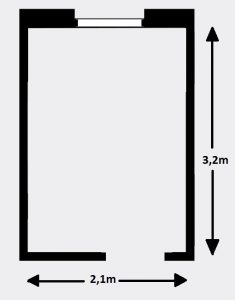 |
| Step 2: Disregard any area taken up by furniture Work out how much of the floor space is taken up by fixed objects. In the example shown the following fixtures can be measured as follows: Bathtub: 0,9 x 2,1 = 1,89m² Basin + Toilet: 1,5 x 0,8 = 1,2m² The total area occupied by fixtures is 3,09m² | 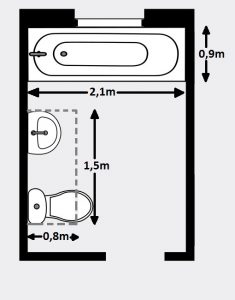 |
| Step 3: Determine the floor area to be heated The total floor area to be heated will be the total area minus the area occupied by fixtures: 6,72 – 3,09 = 3,63m². | 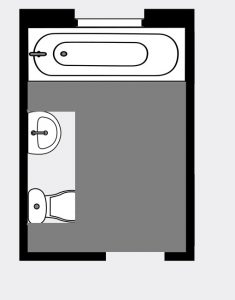 |
| Step 4: Select the heating cable size Assuming the wattage density required is 150W/m², first calculate the total wattage required for the room (area x wattage density): 3,63 x 150 = 544,5W. This means the choice will fall on the 600W cable (DWS600), according to the heating cable dimensions table. To calculate the spacing between cables (spacing between cable loops) the following equation applies:[Area (m²) / Cable Length (m)] x 100 = Cable spacing (cm) In the given example it will be:[3,63 / 44] x 100 = 8,25cm | 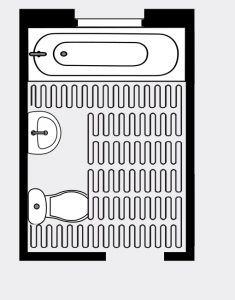 |
The system must be controlled via thermostat and we recommend the use of floor insulation in order to improve savings and system performance.
Also needed

Thermostat
Choosing the correct control system is crucial in ensuring that the heating system works in the best possible way, efficiently and easily
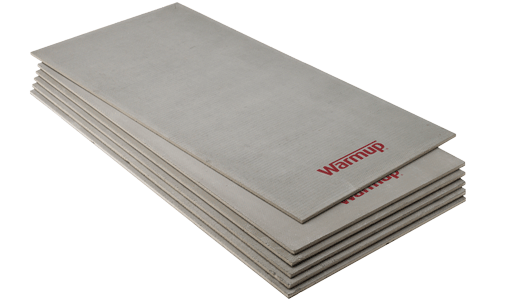
Insulation Boards
Using Insulation Boards with floor heating significantly reduces the heat-up times and running costs.


